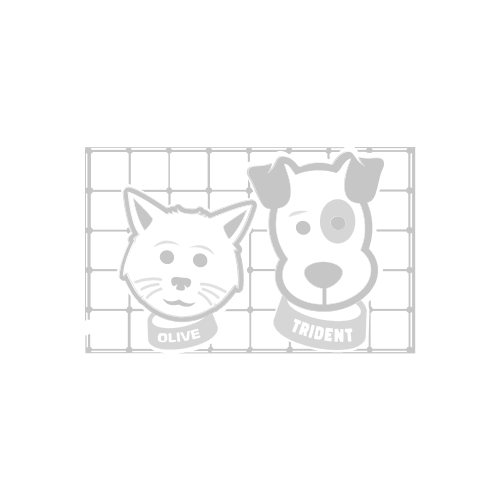Cat VS. Dog People
According to a survey of 1,261 dog and cat parents across the U.S., 37 percent of dog people are not sad when their dogs cuddle with other people and actually are happy that their dogs like other people, while 38 percent of cat people are sad when their cats cuddle with other people and want all their pets’ affection for themselves. Of pet owners with both cats and dogs, 44 percent are just “somewhat bummed out” when their pets cuddle with other people.
Fifty-two percent of cat people prefer to spend time with their cats versus other people, and 43% of dog people prefer to spend time with their dogs over other people.
Rover.com, a national network of 5-star pet sitters and dog walkers, conducted the survey and compiled the report, “The Secret Lives of Cat People and Dog People.”
The data revealed that cat people and dog people are more alike than different. For both, their pets occupy a familial role in pet parents’ lives, affecting everything from furniture selection (35 percent of respondents) to purchasing a car (29 percent) to renting a home or apartment (26 percent).
Rover’s report found that pet parents are nearly unanimous in seeing their pets as family members, with many even preferring animal company to the human variety. Cat people were more likely to feel that way, with 52 percent saying they prefer to spend time with their cats versus people, while 43 percent of dog people saying the same about their dogs.
“Our normal family habits are expanding to the families we choose, our cats and dogs, as Millennials adopt pets as starter families and Baby Boomers welcome pets as extended family,” said Alison Rutty, Rover’s director of cats and new business lines. “Pet parents not only want their pet to be their best friend but to be their pet’s best friend in return. So we have conversations with our cats, comfort our dogs after they have nightmares and consider all our pets in big life decisions.”
In the U.S., 60 percent of households have a dog and 47 percent have a cat.
While those numbers have remained relatively constant in recent years, the pet economy has exploded. Spending on pets increased to $72.1 billion in 2018, up 8.1 percent from 2016.
Cat people buy more lint rollers: 66 percent of cat parents report owning a lint roller, while 55 percent of dog parents have one.
According to the survey results, dog people admit to talking to their pets so many times in a day they can’t even count, while cat people talk to their cats 1-5 times per day.
Cat people lead on singing to their cats with 70 percent making up new songs all the time or singing to their pet at least sometimes, while 63 percent of dog people report doing the same.
The majority of both dog (69 percent) and cat (67 percent) owners admit they say hello to their pet before their family when they get home.
And both take a lot of pictures of their pets, with 84 percent indicating that as much as half of the photos on their phone are of their pets.
The majority (61 percent) of cat and dog people said their pets are spoiled and always take over the couch or bed.
Cuddles are universal: dog and cat people claim to spend 1-2 hours cuddling their pet each day.
The majority (70 percent) of both dog and cat people have 1-5 nicknames for their pet.
Dog people are more likely to wake their pet from a dream than cat people.
For more information, visit the Rover.com website.
?According to American Veterinary Medical Association’s annual “Pet Ownership and Demographics Sourcebook,” about 57 percent of all U.S. households owned a pet at the end of last year. About 38 percent of households owned one or more dogs, the highest estimated rate of dog ownership since the AVMA began measuring it in 1982. Cats were the next most popular pet, found in 25 percent of U.S. households.
More than 13 percent of U.S. households owned a specialty or exotic pet, such as fish, ferrets, rabbits, hamsters, guinea pigs, gerbils, turtles, snakes, lizards, poultry, livestock and amphibians, a 25 percent increase from 2011.
The top 10 states, with the highest percentage of pet-owning households, are Wyoming, 72 percent; West Virginia, 71 percent; Nebraska, 70 percent; Vermont, 70 percent; Idaho, 70 percent; Indiana, 69 percent, Arkansas, 69 percent; Mississippi, 65 percent; Oklahoma, 65 percent; and Colorado, 65 percent.
The 10 states with the lowest percentage of pet-owning households are Rhode Island, 45 percent; South Dakota, 46 percent; New Jersey, 47 percent; Maryland, 49 percent; Illinois, 49 percent; Massachusetts, 49 percent; New York, 50 percent; Connecticut, 50 percent; Georgia, 51 percent; and New Hampshire, 52 percent.
Also, according to the sourcebook, dog owners have a higher propensity to obtain veterinary care than do owners of other types of pet. On average, dog-owning veterinary clients made three visits to the veterinarian per year. Cat-owning veterinary clients made 2.4 visits.
The AVMA also has developed an online pet-ownership calculator, which estimates the number of pet-owning households and the numbers of pets in a community based on the community’s populations. For example, a community of 10,000 people is estimated to have 1,404 dog-owning households with 2,246 dogs, 1,169 cat-owning households with 2,454 cats, 119 bird-owning households with 273 birds, and 58 horse-owning households with 158 horses.
By Marcus Schneck | mschneck@pennlive.com

